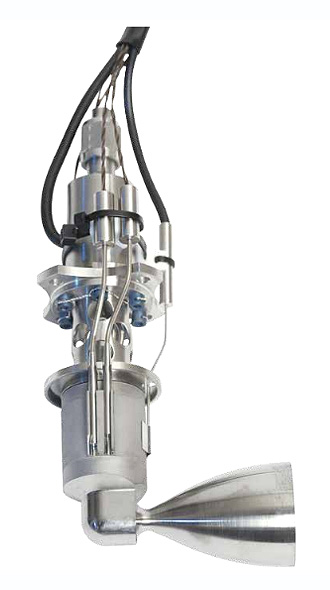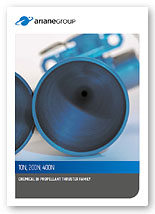
20 N Hydrazine Thruster
General Description
The 20N monopropellant hydrazine thruster is used for the attitude, trajectory and orbit control of satellites, spacecraft and platforms.
The flow of propellant to the decomposition chamber is controlled by a flow control valve, comprising two independent consecutive monostable, normally closed valve stages. When the valve is activated, propellant is supplied through a fuel supply pipe, mounted within the heat barrier, to the injection plate. The flow rate is adjusted by an orifice within the fuel pipe to ensure that the delivered thrust is within the specified limits. The lower end of the fuel pipe is welded to the injection plate, which provides the correct number and inclination of injection holes to ensure an optimum distribution of propellant across the catalyst bed.
When propellant comes into contact with the catalyst, a decomposition reaction is initiated. At low and preheated temperatures the decomposition of the hydrazine is solely due to the contact with the catalyst. At higher temperatures (typically above 600°C) a thermal equilibrium is reached across the complete catalyst bed and the hydrazine is solely decomposed due to temperature (thermal decomposition). Subsequent to the decomposition of the hydrazine the reaction gases are expanded through a conical nozzle with an area ratio of 60, thereby generating the desired thrust.
Each thruster is equipped with an internal redundant catalyst bed heater and with thermal insulation to guarantee an optimum start up. All materials used in the valve and thrust chamber assembly have been selected for compatibility with hydrazine propellant.




